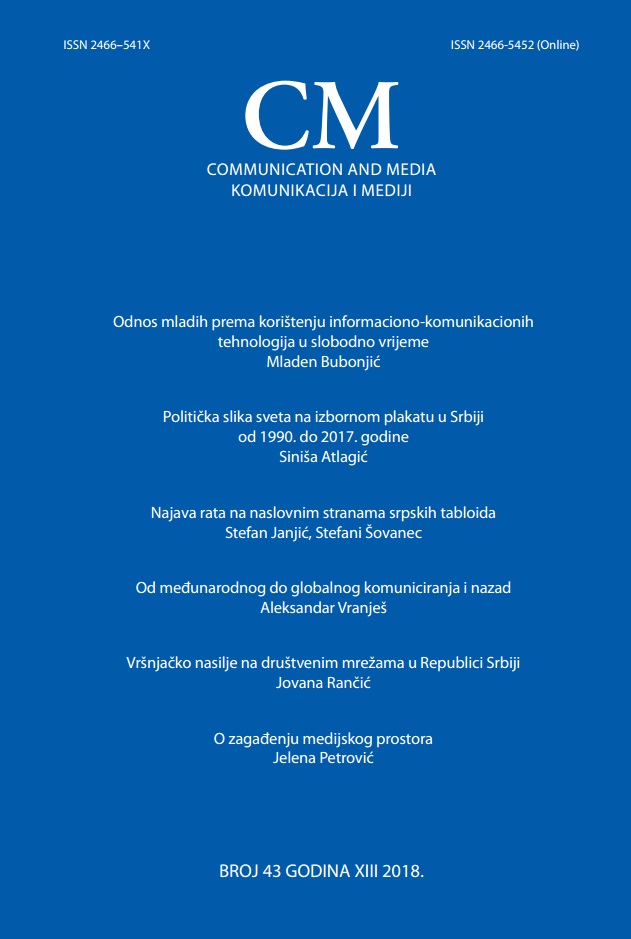Vršnjačko nasilje na društvenim mrežama u Republici Srbiji
Peer Violence on Social Networking Sites in the Republic of Serbia
Author(s): Jovana RančićSubject(s): Studies in violence and power, Social Informatics
Published by: Fakultet političkih nauka Univerziteta u Beogradu
Keywords: Internet; peer violence; cyberbullying; children; child protection; Serbia
Summary/Abstract: During the recent years, electronic violence has become a prominent issue, especially when it comes to young generations. The distinctive characteristics of communication through the Internet make this form of violence a specific phenomenon of modern society. Studies show that electronic violence is gradually replacing traditional peer violence or that these two forms of violence coexist. Electronic violence is often only a continuation of violence that takes place inside a school, school yard, on a street. However, there are cases of peer violence connected exclusively to the Internet environment. Regardless of how and where the violence takes place – in a virtual or real environment, the consequences are equally worrying, often more serious when it comes to this relatively new form of violence. When we talk about the socialization process of modern generations, we can rightly take the Internet as one of the central agents. The latest research shows that the use of the Internet is mainly for social and entertainment purposes. Its primary function is fun and communication with peers. Children use the Internet least for information and for educational purposes. Internet services for communication and virtual identity building become a significant part of growing up. Thus, the lack of knowledge about the dangers that lurk on the Internet can cause the most damage to the youngest. This work theoretically deals with the topic of peer violence. The introductory part defines the concept of electronic violence, characteristics and forms which the youngest users most often face. The emphasis is put on the specificities that distinguish electronic violence from the traditional forms of violence and on the consequences it involves. This phenomenon is observed from the communicational, sociological and psychological aspects. Special attention is given to the issue of protecting children from electronic violence and the role of the state, parents, school, witnesses and the media in this process.
Journal: CM Komunikacija i mediji
- Issue Year: 13/2018
- Issue No: 43
- Page Range: 95-124
- Page Count: 30
- Language: Serbian

